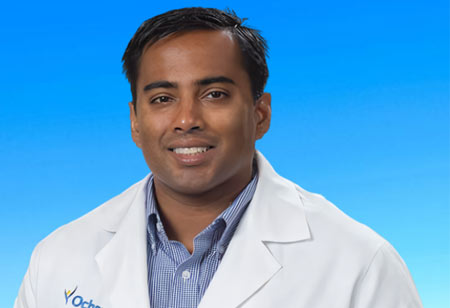Thank you for Subscribing to Healthcare Business Review Weekly Brief

The Transformational Effects Of COVID-19 On Healthcare
Healthcare Business Review
Traditional two-dimensional medical imaging is non-intuitive, complex, and a functional barrier to patient education, medical training and clinical career delivery. Advanced visualization techniques like Mixed Reality (XR) and 3D printing (3DP) are growingly accessible. XR and 3DP can transform inscrutable 2D data into 3D representations which are comprehensible to patients, clinicians, as well as a growing number of novel healthcare stakeholders like biomedical engineers. More and more, patients and clinicians are expecting access to advanced visualization to mitigate medical information asymmetry and aid in their healthcare decision making.
Ochsner Health leverages both additive manufacturing, aka 3D printing, and XR to provide our clinicians and patients a variety of ways to visualize their medical imaging data. XR allows for the stereoscopic visualization of three-dimensional modes that can provide insights better than traditional 2D imaging without the need for printing resources. When haptic feedback is helpful, our workflow can output a physical 3D printed model. Oftentimes the combination of both 3DP and XR models are needed to best understand complicated anatomy and inform medical decision making. These models are integrated not only into clinical decision making, but also our clinical workflows in a patient-first and patient-centric manner.
"The pandemic has provided a multitude of opportunities to improve healthcare delivery as well as engendered the momentum and motivation to address them."
Approaching healthcare innovation, particularly during times of uncertainty, can be a daunting task.The Ochsner Neurosciences Medical 3D Lab ‘s development has demonstrated that lean infrastructure and teams are more likely to successfully complete needs validations and prototyping. Completion of these initial objectives de-risks the investment required to grow and create more impactful deliverables. One such agile approach has been to harmonize the interests of clinical trainees with the capabilities of the lab and the needs of our healthcare institution.
Generally, these individuals are more aware and comfortable with novel technologies. Additionally, students have an intuition about the how to apply these technologies to medicine and are eager to deploy them. By leveraging available resources and mitigating costs and risks, lighter footprint initiatives are more likely to get preliminary support in healthcare’s increasingly resource-limited environment.
Introducing and adopting novel tools like 3DP and XR into healthcare is non-trivial but is growingly necessary. Innovation requires organizational discipline to filter multiple and rapidly emerging technologies to ascertain whether they can add value and serve as healthcare delivery tools. New technologies require rigorous and efficient vetting. Likewise, the approaches to adoption and integration into healthcare delivery need to be more effective and adaptive. innovation Ochsner has developed methods and teams to validate and scale digital medicine tools into Ochsner’s diverse and growing healthcare system. This has led to the operationalization of multiple health innovations programs like Digital Medicine, Optimal Hospital, Connected MOM, and the Ochsner Neurosciences Medical 3D Lab.
Although individually curious and progressive, healthcare as an industry tends to be more conservative with regards to technology adoption. It is important for healthcare disrupters, particularly external ones, to appreciate the intrinsic and appropriate skepticism towards novels technologies that have the capability to harm as well as to help. The pandemic has provided a multitude of opportunities to improve healthcare delivery as well as engendered the momentum and motivation to address them. For example, COVID has revealed the fragility of the healthcare supply chain as well as our nascent capabilities to sustainably and locally address certain clinical needs. Computed aided design and rapid prototyping will increasingly aid healthcare providers and systems adapt to a post-pandemic world. The next generation of healthcare will actualize the tools of co-localized design using mixed reality and advanced manufacturing to achieve the vision of a more sustainable, equitable, and personalized healthcare future.









